
3 Oct, 2016
Letter from South Africa: Travel & Tourism awaits its Gandhi and/or Mandela
Johannesburg — Sunday Oct 2 commemorated the 147th birthday of Mahatma Gandhi, the Father of the Republic of India. The event, marked globally as the International Day of Non-Violence, witnessed the usual round of solemn speeches and tributes.
This year, I was fortunate to mark the event in South Africa, the country where the seeds of Indian independence were sown. Mahatma Gandhi, then a young barrister, lived in South Africa between 1893-1915. The oppression he experienced under the nauseating, white supremacist system known as apartheid laid the foundation for his revolt against British colonialism in India and, decades later, inspired a similar freedom movement against apartheid itself, led by the late Nelson Mandela.
Just as South Africa pays tribute to Mr. Mandela, the Father of modern-day South Africa, on July 18, with an International Mandela Day to mark Freedom, Justice and Democracy, it also recognises its own contribution to the cause of Indian independence.
A little distance outside Johannesburg is a graceful, greenery-shrouded cottage now known as Satyagraha House. Easy to find via Googlemap, the Johannesburg City Heritage site is where Gandhi resided with a Jewish architect friend and ally, Hermann Kallenbach. He, along with an inner circle of Jewish well-wishers, became some of the Mahatma’s most fervent supporters in formulating the framework for Satyagraha (non-violent resistance, or peaceful protest).
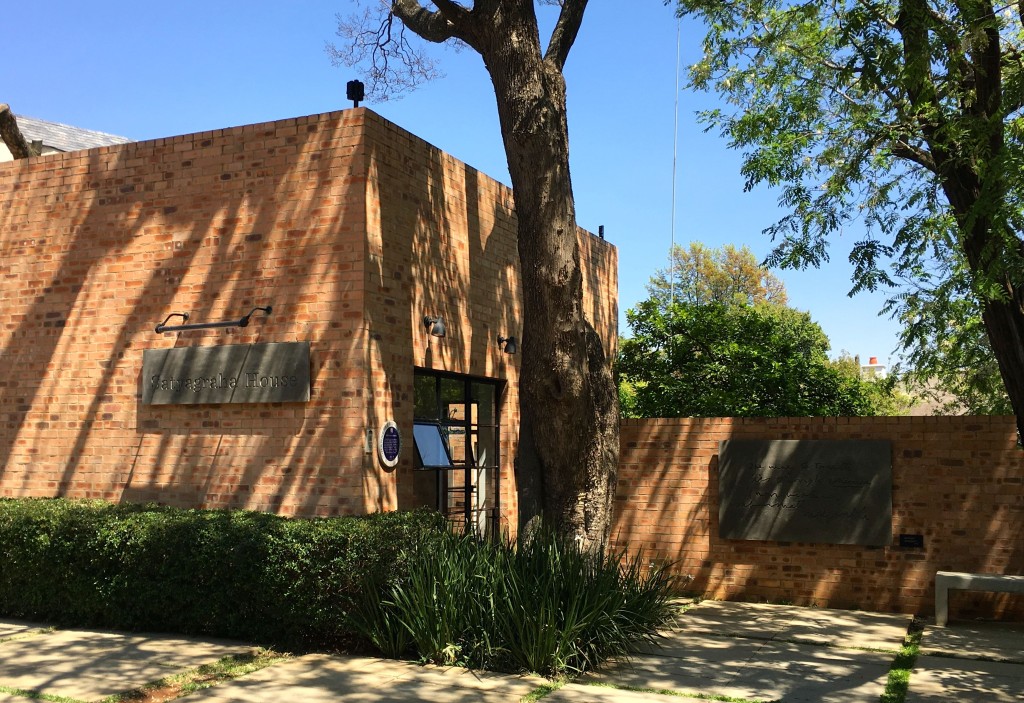 The entrance to the Satyagraha House |
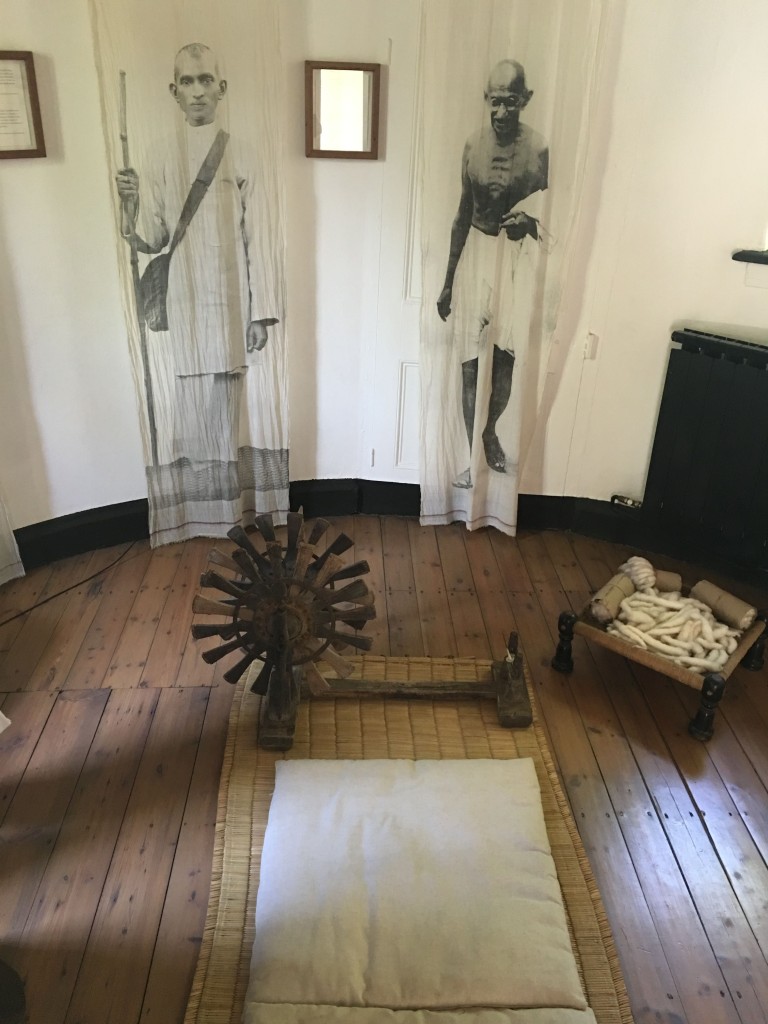 The room where Gandhi slept |
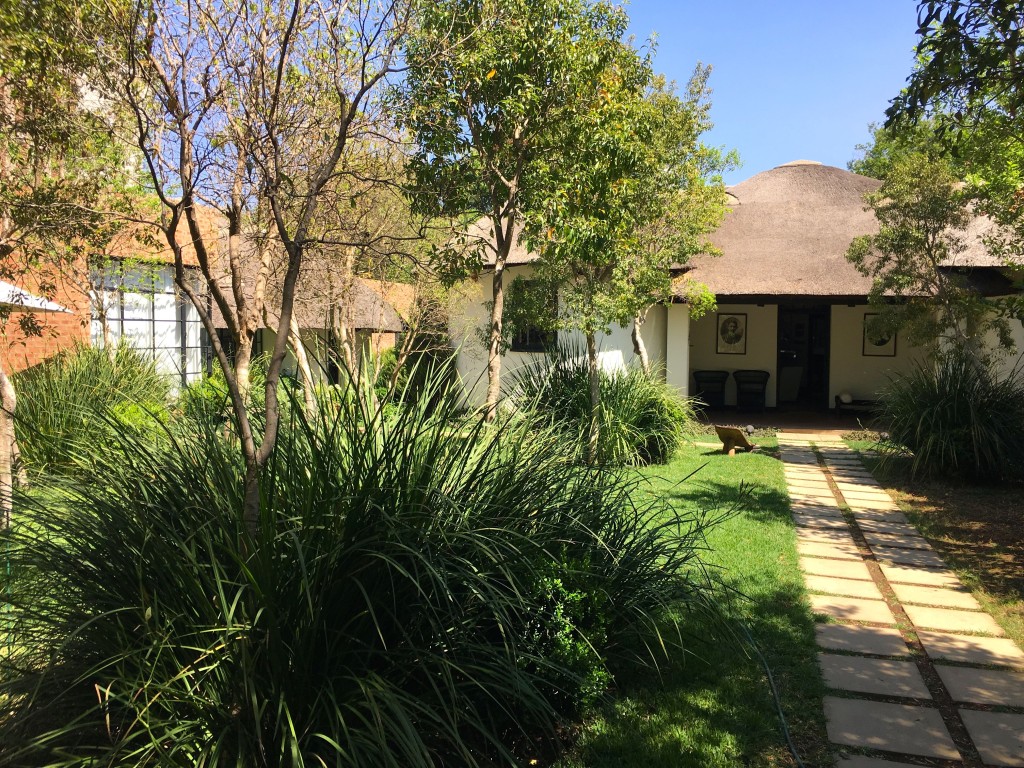 The original cottage is on the right. To the left are guest-rooms that were added as part of the restoration and renovation project for visitors to stay overnight (see more pictures below). |
Satyagraha House is today owned by a French company and its carefully researched memorabilia carries dual French-English interepretations. It attracts only a trickle of visitors, mainly Europeans, not many Indians. As a history-buff and museum-junkie, I visited the House to soak in the atmosphere, be inspired by the power of Satyagraha and hail the courage of the most brilliant leader of the last century.
A firm believer in the sanctity of human life, Gandhi saw peaceful protest as the best way to gain independence for India. He sought to build an inclusive society by uniting the country’s ethnic, cultural and racial assets in a common fight against poverty. Based on his famous dictum, “There is enough in this world for everyone’s need, but not for everyone’s greed,” his recommended lifestyle model espoused simplicity and frugality via environmentally-safe and self-sufficient habits and routines.
Today, an exploration of Satyagraha House allows visitors to reflect on whether Gandhi’s political, economic and social guidance is being followed in India or whether it is, for all intents and purposes, dead.
My visit to Satyagraha House was against the geopolitical backdrop of looming violence — heavy-duty sabre-rattling between India and Pakistan over unrest in divided Kashmir.
Mindful of the divisiveness of apartheid, Gandhi had opposed the partitioning of post-independence India along sectarian Hindu-Muslim fault-lines. He knew it would be a recipe for disaster. And so it has proved to be.
What, I wondered, would the Mahatma have thought of Indian Prime Minister Narendra Modi, India’s first “strongman”, whose political background can be traced back to the Hindutva extremist group, the RSS. He sees as his calling to combat “terrorism” originating in Muslim-majority Pakistan. That is, by extension, a war of sorts between Hindus and Muslims.
Gandhi was assassinated in January 1948, at the age of 78, by Nathuram Godse, a Hindutva terrorist who was cut from the same RSS cloth as Mr. Modi, and bitterly opposed Hindu-Muslim fraternity. In 2002, Mr. Modi was chief minister of Gujarat. Under his watch, communal riots led to hundreds of Muslim deaths at the hands of Hindutva fanatics.
The message I gleaned from Satyagraha House is that Nathuram Godse’s dreams are coming true, not the Mahatma’s. As I walked through its brilliantly restored and spotlessly clean rooms, I recalled another of the Mahatma’s most memorable quotes, “An eye for an eye will leave the whole world blind.”
Having also lived in the Middle East, I am also a passionate supporter of the Palestinian pursuit for freedom and independence, the same freedom and independence sought by the South Africans and the Indians against their oppressors. Given the role and influence of Mr. Kallenbach in support of Gandhi, I also wondered whether today’s Jews have learned the lessons of history.
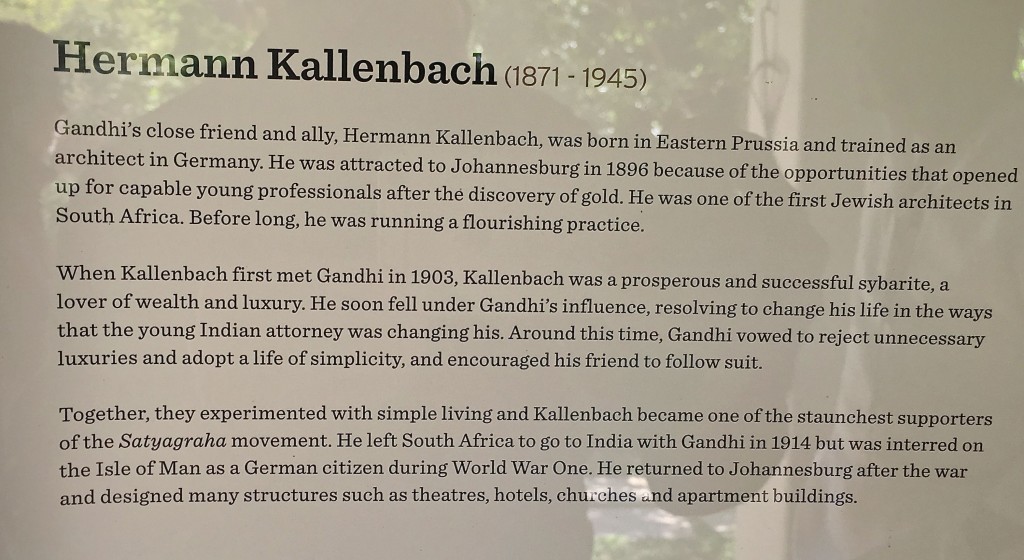 Snapshots of the displays about Hermann Kallenbach |
 Snapshots of the displays about Hermann Kallenbach |
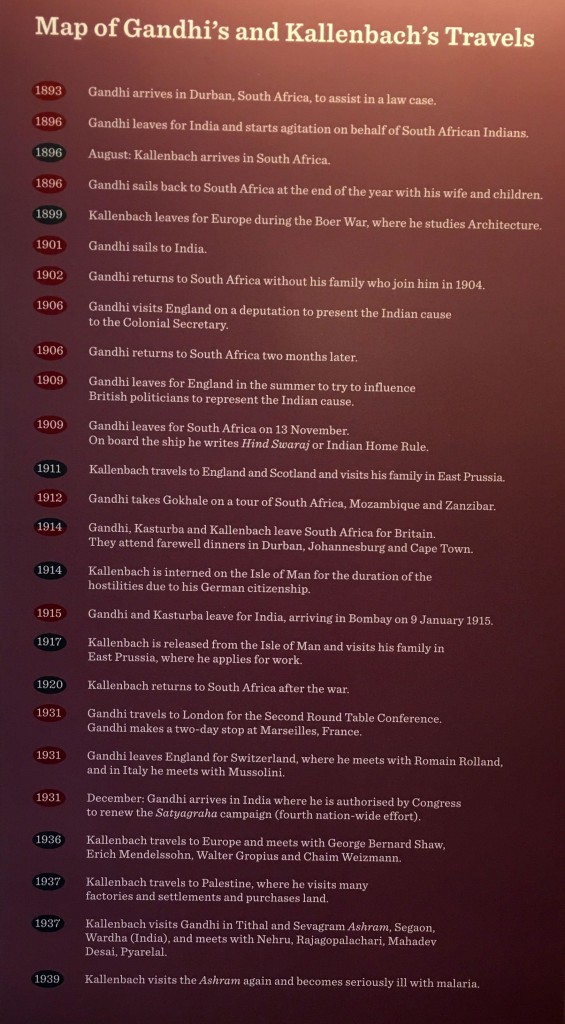 Snapshots of the displays about Hermann Kallenbach |
Gandhi died a violent death in 1948. Kallenbach died of a stroke and heart failure in 1945. One of the displays in Satyagraha House says he gave the major share of his inheritance to Jewish settlements in Palestine.
Indeed, the interpretation display at Satyagraha House refers to “Palestine,” not Israel. It does not say what Mr. Kallenbach thought of the future of Palestine, which was under British occupation at around the same time India was.
Hence, the real significance of Satyagraha House is that it makes for a thought-provoking comparative analysis between the independence struggles of India, South Africa and Palestine, and the differences in their leaderships and current status.
Today, South Africa and India are free countries but Palestine is still under the boot of Jewish occupation. The right-wing Israeli government is fulfilling the dreams of a home-grown Jewish terrorist, Yigal Amir, the fanatic killer of Yitzhak Rabin, the Nobel Peace prize winning former Prime Minister of Israel.
Today, Israel is doing to Palestine what the British did to both Palestine and India. The cancerous Jewish settlements to which Mr. Kallenbach donated his money have spread throughout Palestine and are on verge of wiping it off the map.
The tourism situations of each also can be directly correlated to their respective political status.
South Africa, now a Rainbow Nation and struggling democracy where racial and/or ethnic slurs are frowned upon, is enjoying a booming tourism sector. In India, tourism is booming but will quickly go bust in the event of a war with Pakistan. Politicians, the media and millions of online chatrooms spew out venomous racial, ethnic hatred which could easily ignite more internal Hindu-Muslim clashes, akin to Gujarat 2002. Palestine, potentially one of the world’s promising tourism destinations, is in the same sorry struggling condition it has been for decades, seeking freedom and independence from Jewish occupation.
In the apartheid days, South Africa and Israel were hand-in-glove buddies, and India was a champion of Palestinian independence. Today, that has been reversed. A free South Africa has followed Mandela’s footsteps and become a supporter of Palestine. India under Modi is now heading in the other direction and becoming a major ally and supporter of Israel.
The diplomatic world refers to this flip-flop as “realpolitik.”
Museums and memorials are designed to help visitors reflect on the past and honour visionary leaders who lived and died for noble causes.
But as I walked through Satyagraha House, I wondered whether the travel industry contemplates the deeper messages of these powerful museums. Will its leaders ever stop blabbering ad nauseum about billions of tourists and growth and resilience and disruption and provide platforms for reasoned, serious discussion about some of the more important issues facing mankind.
Geopolitical, ethnic, social and cultural conflicts are all man-made. They fly in the face of everything the travel & tourism industry supposedly holds dear. Leaders like Gandhi and Mandela sought to help their followers rise above them. Gandhi and Rabin were both assassinated by their own extremist terrorists. White supremacists confined Mandela to jail for 27 years, including 18 years in a cold, cruel cell on the desolate Robben Island.
Visitors drift somberly through museums commemorating these sacrifices. National leaders, as well as travel industry leaders, trot out the usual pontificatory speeches. After the ceremonial back-thumping is over, they all go back to business as usual.
And history, like the perpetual business cycles, repeats itself.
This is one cycle that desperately needs disruption. Thai will happen only when travel and tourism, too, sees the rise of its own Mandela or Gandhi.
So far, no such leader is in sight.
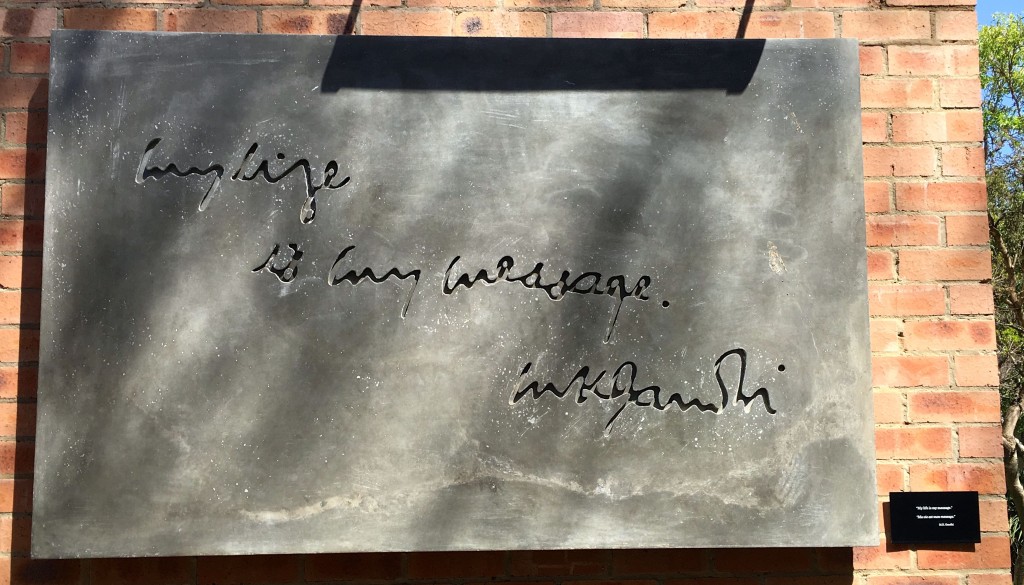 Engraved in stone: My life is my message. |
||||||||||
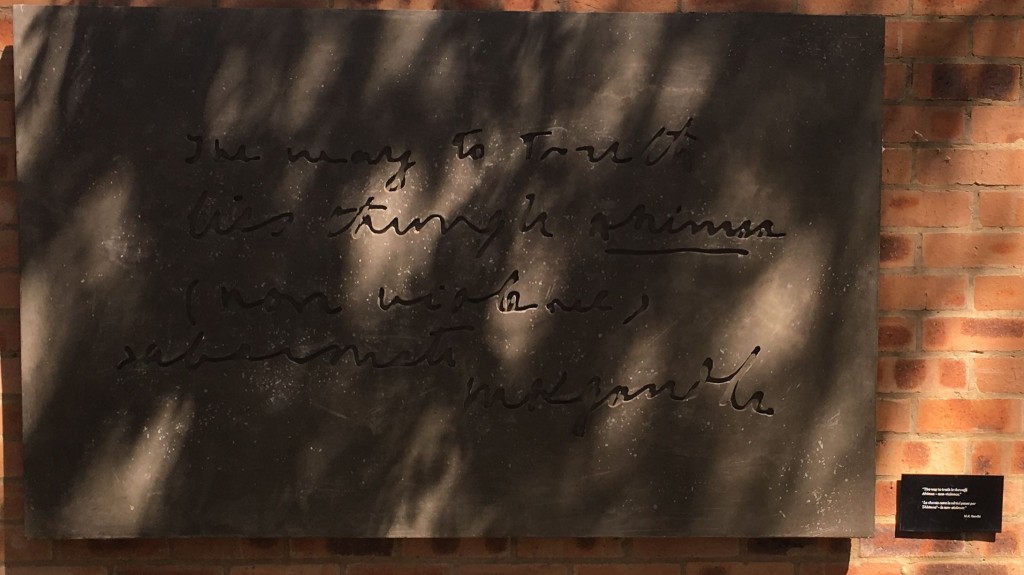 The way to Truth is through Ahimsa (non violence). |
||||||||||
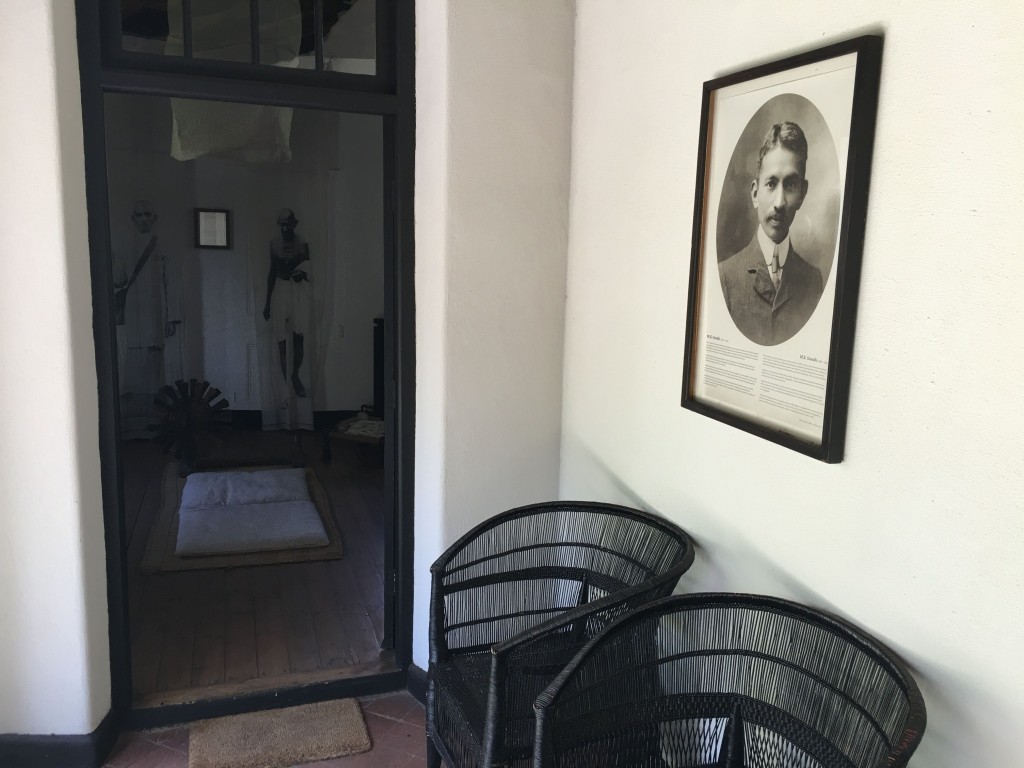 The entrance to Gandhi’s room. |
||||||||||
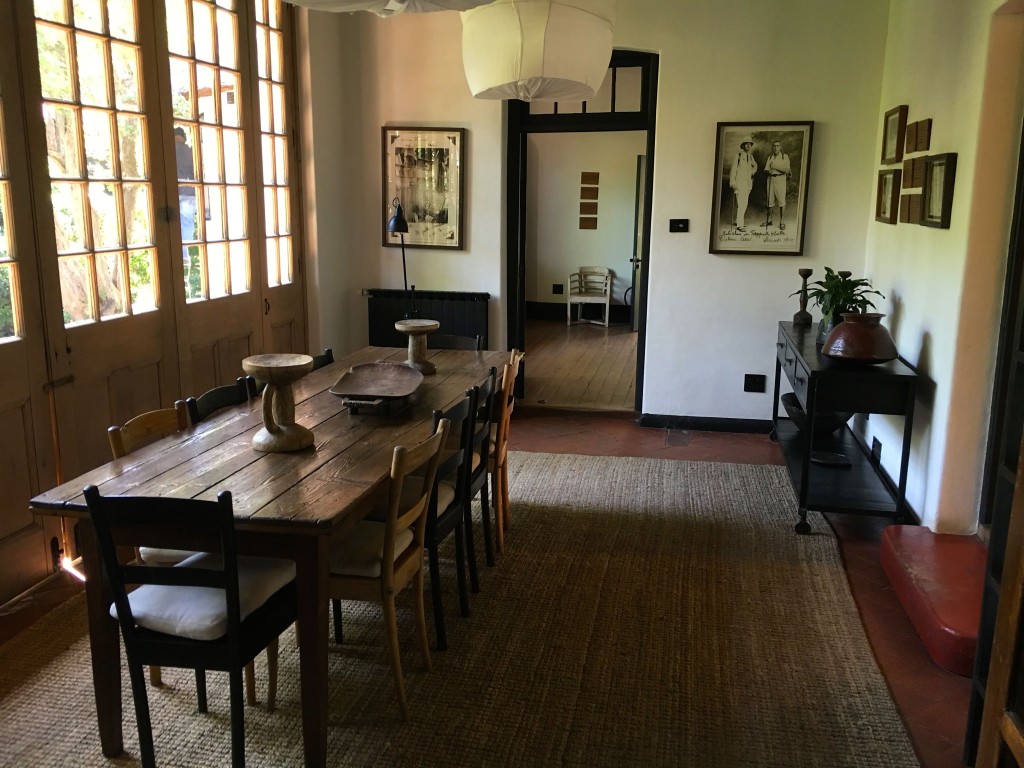 The dining room. |
||||||||||
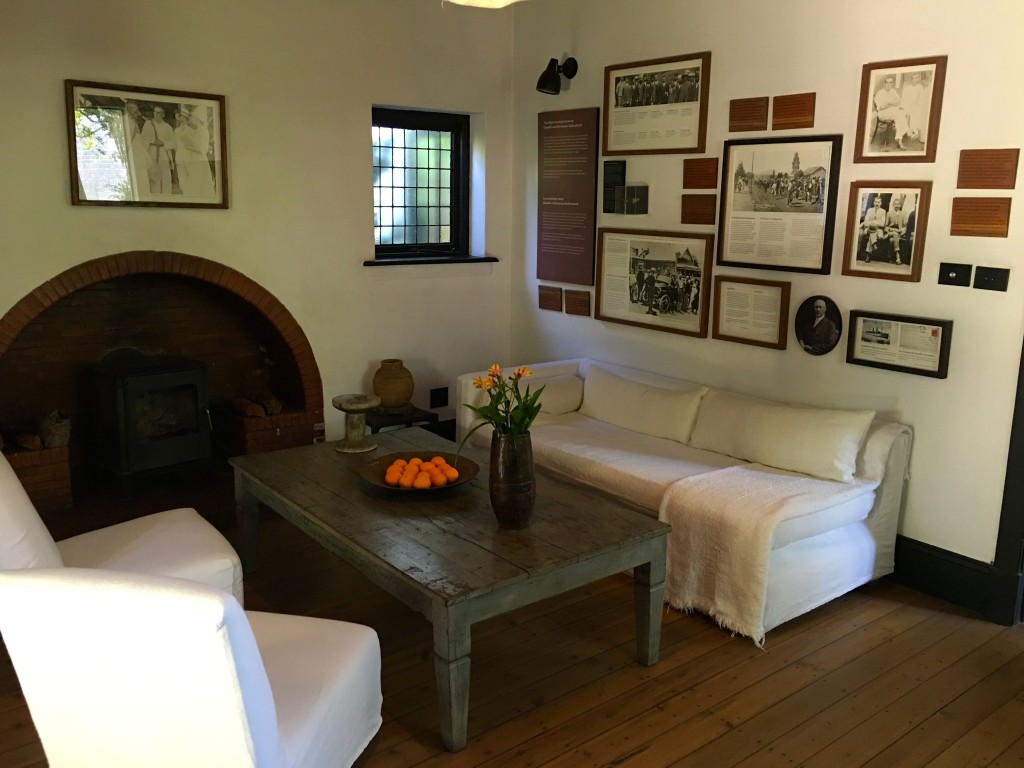 The sitting room. |
||||||||||
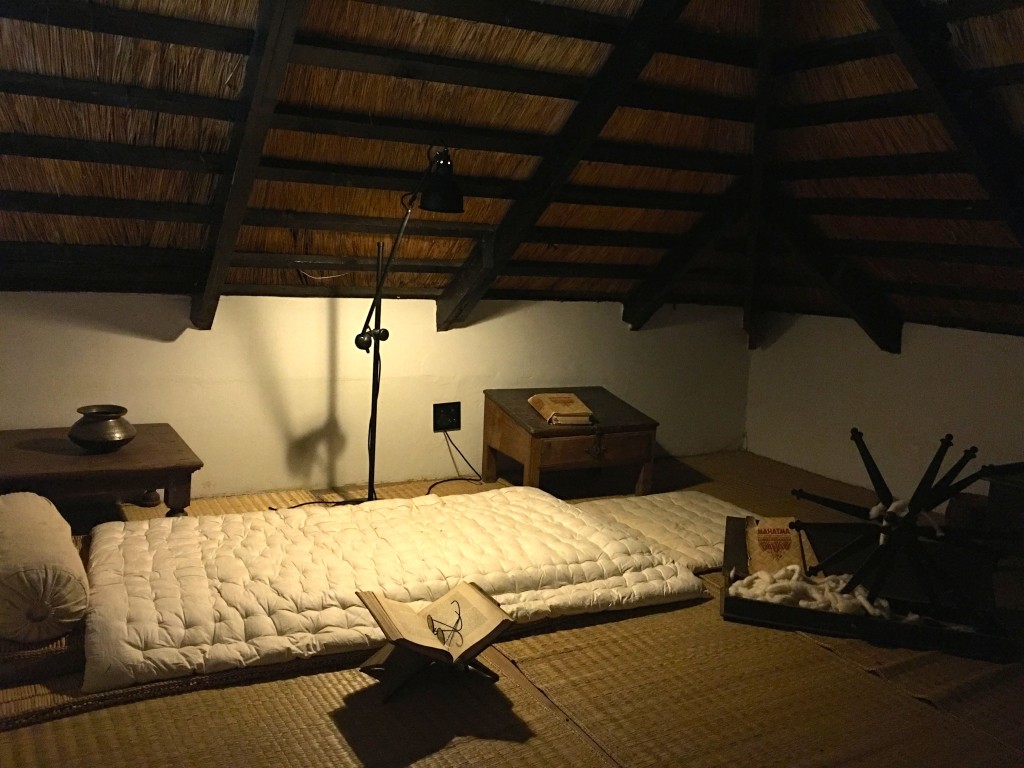 The ‘quiet room’ in the upper loft where Gandhi would go to meditate and contemplate. |
||||||||||
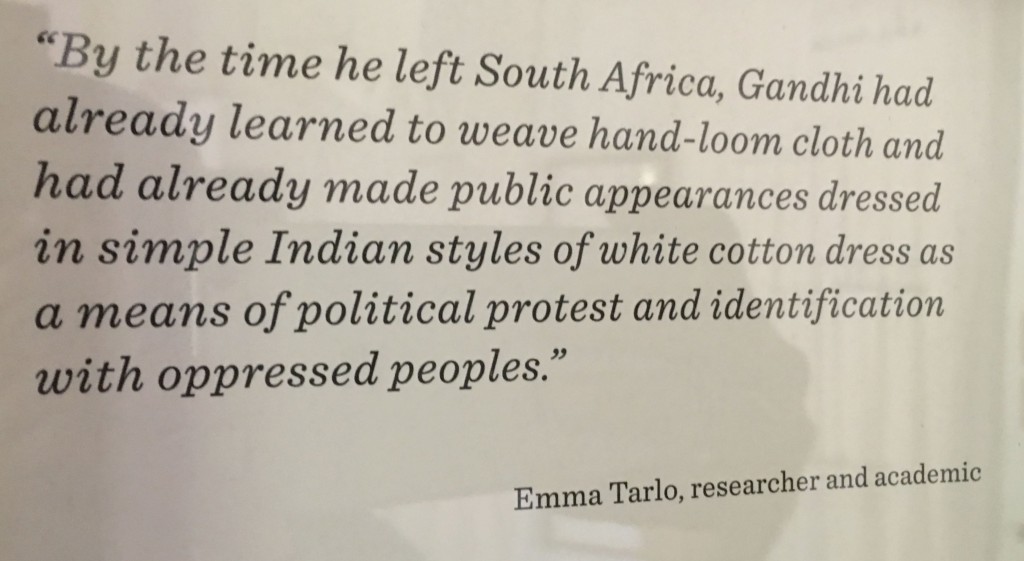 |
||||||||||
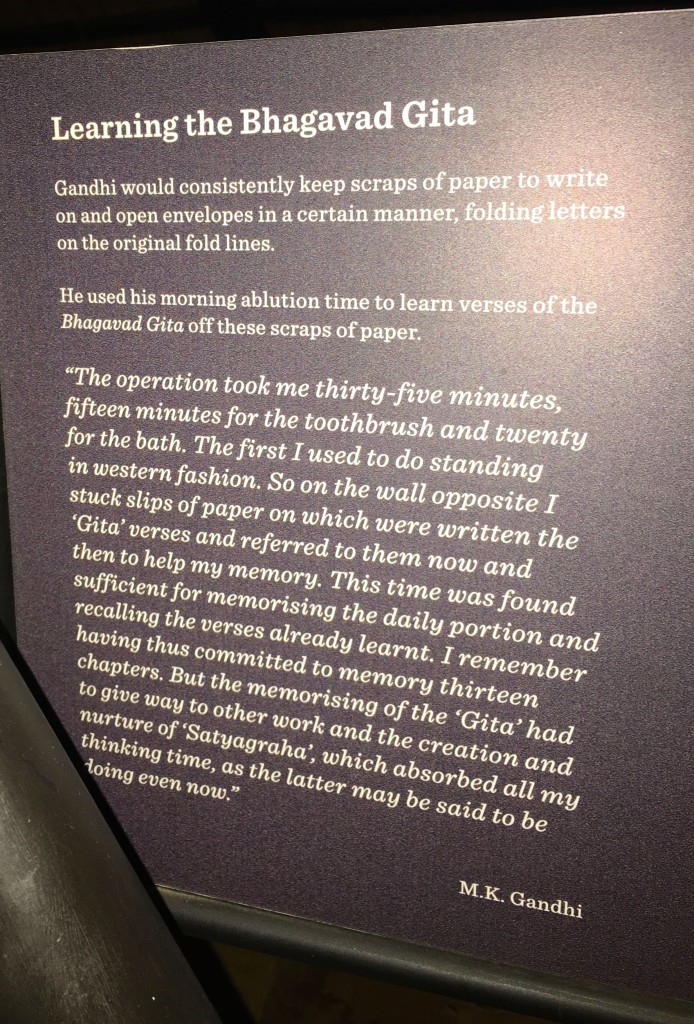 The Bhagavad Gita was a true guide to Gandhi, the path to true Hinduism, not the extremist political version known as Hindutva. |
||||||||||
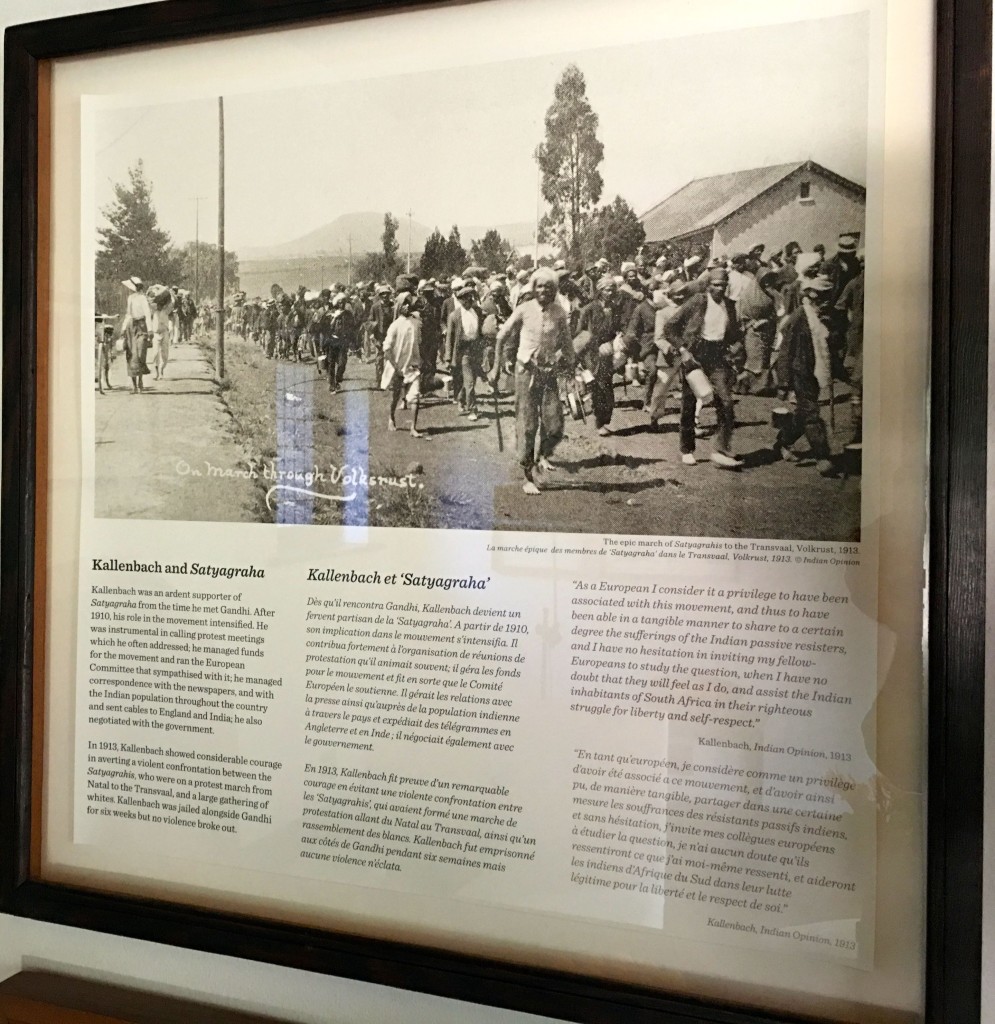 Kallenbach and the Satyagraha. Click on the picture to enlarge. |
||||||||||
|

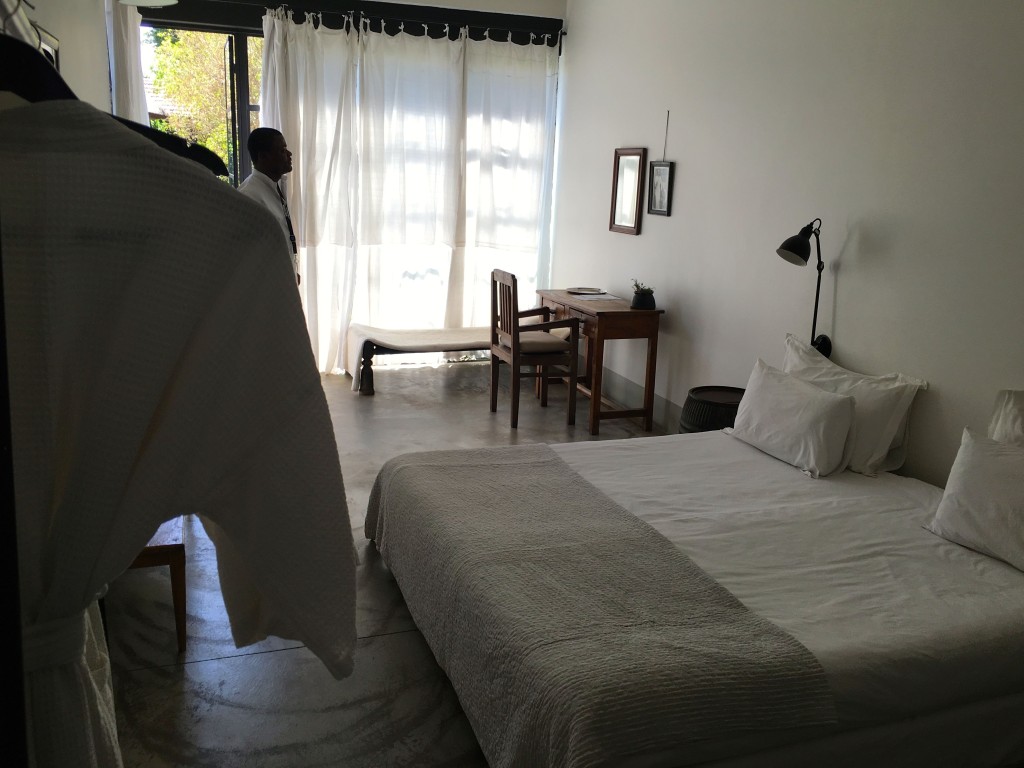
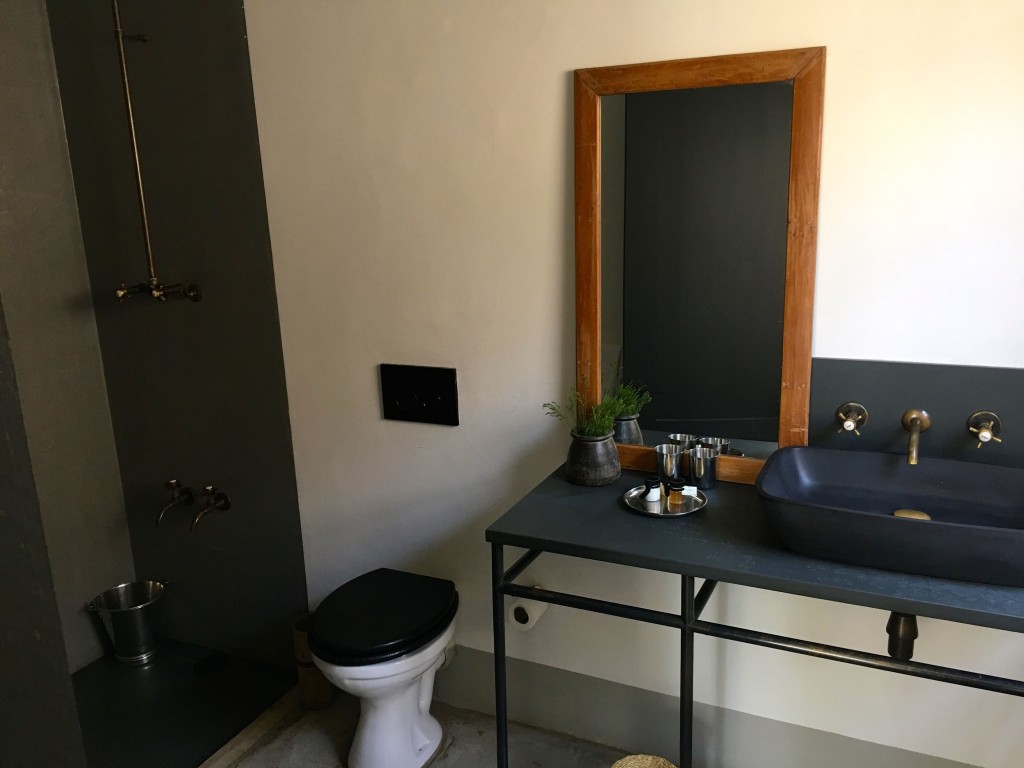
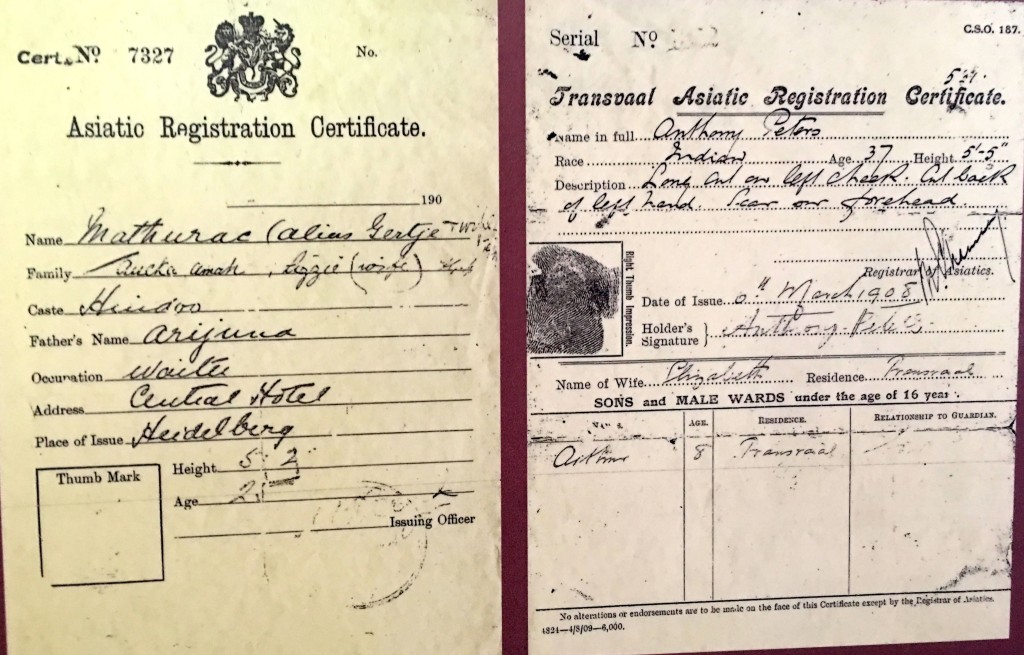
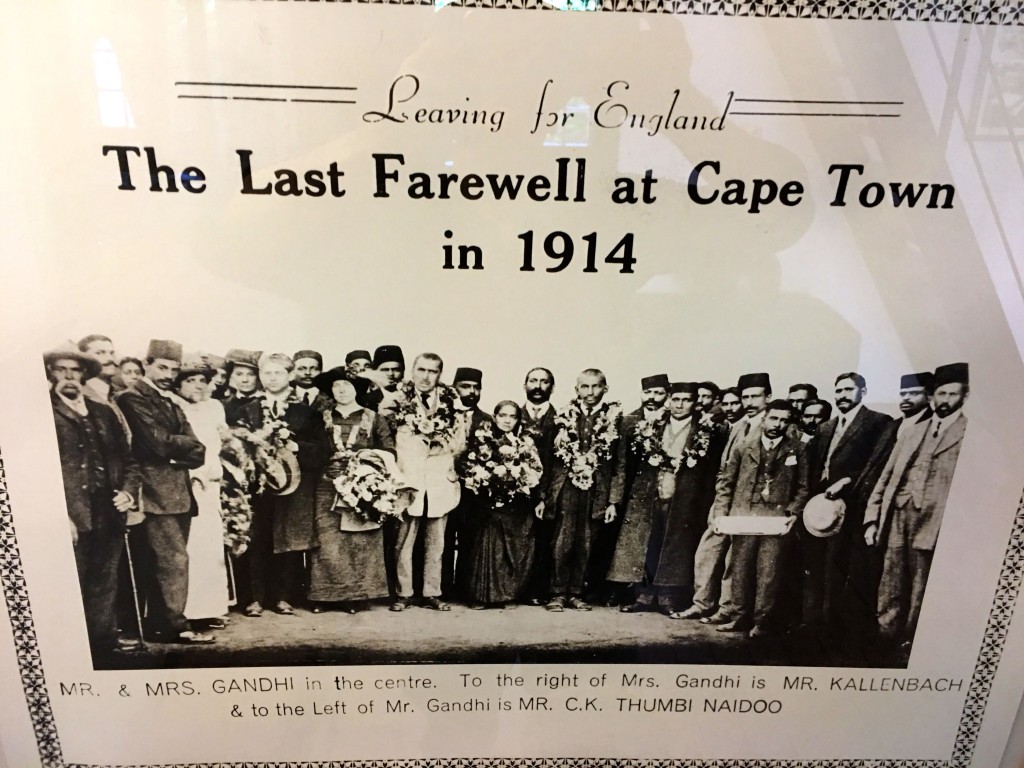


Liked this article? Share it!